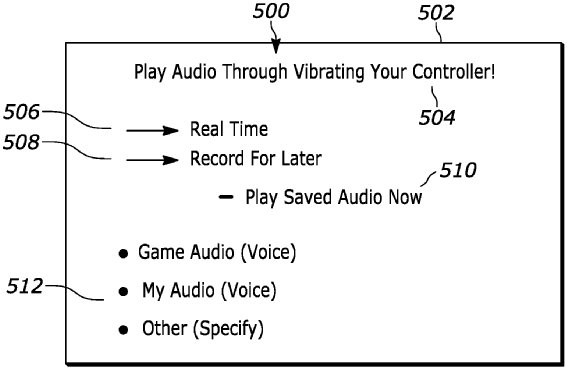
Story Highlights
- A new Sony patent wants to add haptic feedback to players’ voices in games.
- The patent will let you add haptic feedback in real-time or later, after gameplay.
- Haptic feedback may also work with NPC dialogues and party chat for more immersion.
Sony has been tinkering with many ideas to boost innovation in its gaming tech. It has been leagues ahead of some departments. Now, a new patent published by the company wants to add haptic feedback to players’ voices in games. In other words, the controller microphone will pick up on your audio, in-game NPC dialogue, and party chat in general before adding haptic feedback for more immersion.
The patent dubbed “HAPTIC FINGERPRINT OF USER’S VOICE” wants to improve how haptic feedback works during gameplay. It argues that video games generate a lot of vocal audio that remains untouched by haptic feedback features. As a result, Sony wants to make use of all the vocal audio of players and in-game enemies to make the audio more integrated into the gameplay.
To enhance the sensory experience of voice, in some cases at a later time than the speech was spoken to enable reliving emotions and experiences, vocal sounds captured by a microphone are processed by a computer game controller API. The API plays back the vocal sounds at a later time in haptic format on the controller. The vocal sounds may be computer game dialogue, party chat, or vocal sounds of the user as demanded by the computer game,” reads the patent.

The publisher talks about adding two options. One would let players store the vocal audio and play it later after the haptic feedback is added. Another would add the more common near-real-time haptic format on the controller, which would enhance players’ voices during current gameplay.
The API or other control component plays back the vocal sounds either in near-real time or at a later time in haptic format on the controller. In other words, the vocal audio is sent to the haptic generator to activate the haptic generator to produce tactile sensation in the controller 206. The voice audio also may be played on an audio speaker.”

All in all, we can expect the addition of haptic feedback to players’ voices to add an extra layer of depth during gameplay. It may feel more immersive and let others understand the audio better during the chaos of hardcore gaming. However, more applications of such a feature are still up in the air.
PlayStation’s haptic tech is a pretty commendable feat, but it has not stopped Sony from tinkering around with more audio innovations. It once published a patent for a dynamic audio system that can change music depending on gameplay. Similarly, another idea was secured to block verbal abuse in real-time from voice chat in games.
Thanks! Do share your feedback with us. ⚡
How can we make this post better? Your help would be appreciated. ✍



